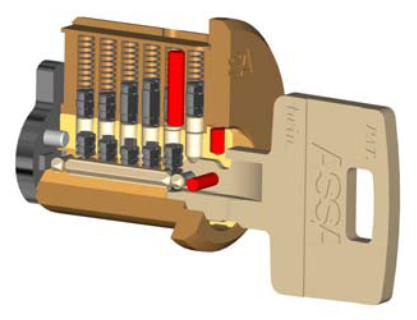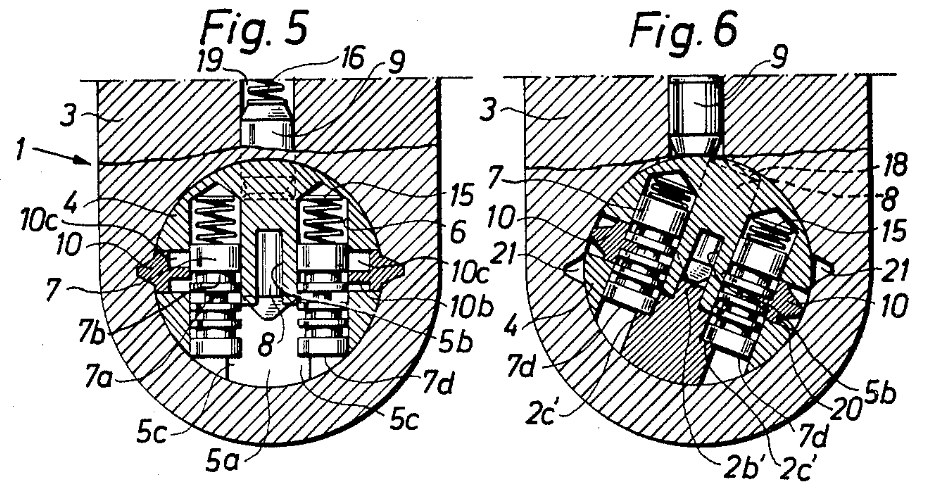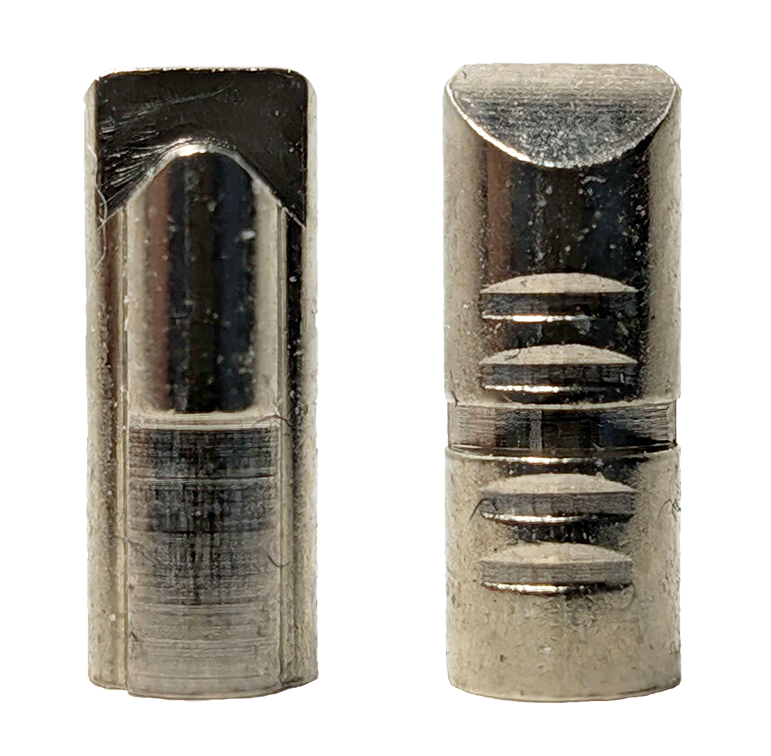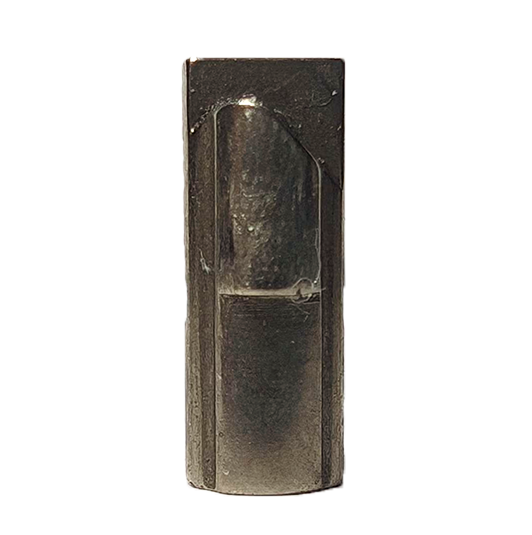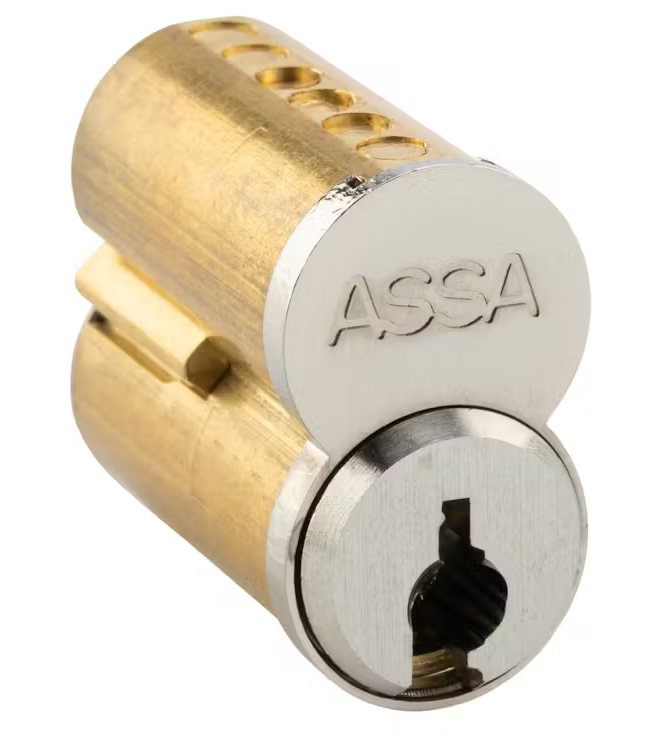Development of the ASSA Twin Series
The story of the evolution and development of the ASSA Twin series of high security locks is a long and interesting one. And here it is.
This article will discuss the iterations and updates to the Twin series of locks, what motivated them, and what consequences they have, both picking and non-picking. For an overview of the differences between the different locks of the Twin series, I recommend you watch this video by Artichoke2000. Here I will go into greater detail of small developments for those who enjoy useless information.
Concepts for the Twin 6000
It all began with the filing of patent number 4,356,713 by inventor Bo Widen, detailing a high security lock with a extra rows of side pins. ASSA would come to own the rights to this patent outright, something that would not happen again for subsequent Bo Widen patents. The design would be produced for ASSA's 100 year anniversary and released worldwide shortly thereafter.
The final product would be a melding of Bo Widen's original ideas for the lock with contributions from ASSA's own engineers. The primary function of the lock was to be able to support heavy master keying in the pin tumbler portion, while relying upon the sidebar, which would never be master keyed, to supply a floor of a minimum level of pick resistance as well as bumpproofing. The side bitting on the key would be precut at the factory, which would provide a degree of exclusivity and copy protection, and also not require locksmiths to own specialized (and expensive) key machines; a normal code cutter or duplicator would suffice.
The now-well-known precoded sidebar system was a Bo Widen concept, designed to not only make keying the lock easier, with all side pins being identical, but also to free up design space by stopping worries of decoding attacks on the side pins themselves. Compare the Twin 6000 to something like the Desmo, which must place the pins on stilts and keep the cut area far away from the keyway. ASSA would fit an extra false gate to Bo Widen's initial side pin design.
The pin tumblers were to have a very large range from deepest to shallowest cut, while also having a relatively large step size between cut depths. The step size is 0.6mm, or around 24 thousandths of an inch— compare this to the 15 thousandths step of a Schlage system. Kwikset has a step size of 23 thousandths, but only 7 possible depths, whereas ASSA would use 9. This effort was to allow single-step master keying; that is, using a master pin (or master wafer) with a cut of 1. This is something that most master keying systems such as Schlage forbid due to the tendancy of the thin pins to flip over inside the chamber and jam. With the combination of a high number of possible depths, six chambers, and single-step master keying, ASSA locks would be very flexible even for large key systems.
Although Bo Widen's original patent did not specify any special kind of driver pin, ASSA would implement their "gin bottle" and countermilling system that had been in development for their 500 and 700 series of locks. Tapered pins that were intended to prevent re-turning the core forward after releasing tension were deemed less effective than more gin bottles, and so all chambers now used them. Countermilling was omitted from one of the chambers (typically 3rd from the front) to ensure the plug could not wobble freely without a key inserted (the deepest cut is not a true zero-lift, however a gin bottle head may sit aligned with the countermilling without a key).

To match the high pick resistance of the lock, it was also designed to be highly resistant to physical attacks. Anti-drill hardened inserts would be installed in the top and side of the plug face, between the pin stacks, and in the bible where possible. The force-bearing driver pins and side pins were to be made from steel. The sidebar was designed with arch-shaped fences that would distribute force more evenly over the pins than a flat sidebar would.
Optionally, the entire sidebar mechanism may be omitted for a lower security lock that can integrate seamlessly into key systems and accept the same keys. This would be named the Twin Low.
The lock would be produced in multiple keyways to add another layer of geographic exclusivity. Cross-sectional keys would not be produced, instead a single key system was intended to use the same keyway throughout.
Further possibilities were discussed in the original patent, but not implemented, such as adding a second row of side pins on the other side of the lock, or angling the side pins such that they would not be parallel to the pin tumblers.
Issues with the Twin 6000
The 6000 had a number of design issues that soon became apparent. For one, the side pins were much more difficult to produce than anticipated. The combination of the very narrow waist produced by turning the true gate, the pocket required to fit the spring, and the use of steel as the material meant they required high precision to manufacture. Third party companies that typically assisted in production, such as Medeco, Sargent, or Keso were unable to make them. As a result, the side pins were made exclusively in Sweden and at a high cost. A refill bag of 50 side pins cost close to $60 US initially, with more recent costs being over $120.
To make matters worse, the side pins would often rust in outdoor environments and become seized. But even in indoor use, tight tolerances of the fitting between the side pins and plug meant small pieces of debris/burrs or any small deformation of the plug could cause the pins to get stuck as well.
The pin tumblers also had a share of design problems. Countermilling was difficult to manufacture reliably, and was done quite late in the production of the plug, where a failure was costly. Even on the same plug, inconsistencies between the countermilling of the chambers were not uncommon. Plus, dirt and debris could collect in the countermilling and reduce its effectiveness. As a cherry on top, locksmiths would sometimes install the driver pins upside down and defeat the entire purpose.
Finally, the keyways had relatively simple geometry and the side bitting did not have any real copy protection enforced by patents. The different keyways proved to be redundant alongside the coded sidebar principle when they did not offer master keying capabilities, and most installations opted to use the unrestricted 51 keyway.
Improvements with the V-10
The release of the V-10 many years later saw improvements to many of these issues.
First, the side pins were completely redesigned. The turned true gates were replaced with milled ones. The material was changed to nickel silver. The hole for the spring was made shallower (~2.8mm deep on the 6000 to ~2.3mm on the V-10), which also required an update to the spring. The new spring was given tapered ends to insert into the slot friendlier. A guide piece was added to prevent the pin from rotating in the chamber. False gates were still produced by turning, and the bottom false gate was removed as it would interfere with the guide piece. A rounded foot was added on the bottom creating a dedicated contact point with the key, reducing key wear. The surface where the side pin contacts the housing while a key is not inserted was rounded off so it would sit flush with the outer surface of the plug.
A new feature was the ability to have left or right handed side pins which would allow for a pseudo-master keying capability for the sidebar without adding additional true gates. The pin would contact the key in a different place depending on its handedness, and could therefore be bitted differently. In practice, this capability was rarely used if ever. The patent for this concept is held by Bo Widen.
This type of side pin is generally considered easier to pick compared to the 6000.
Because the side pins were changed from steel to nickel silver, a new piece of drill protection was added directly in front of them. However, this insert overlapped with the holes used for the sidebar springs, and so those holes were made shallower, and the sidebar springs were updated to use fewer coils.

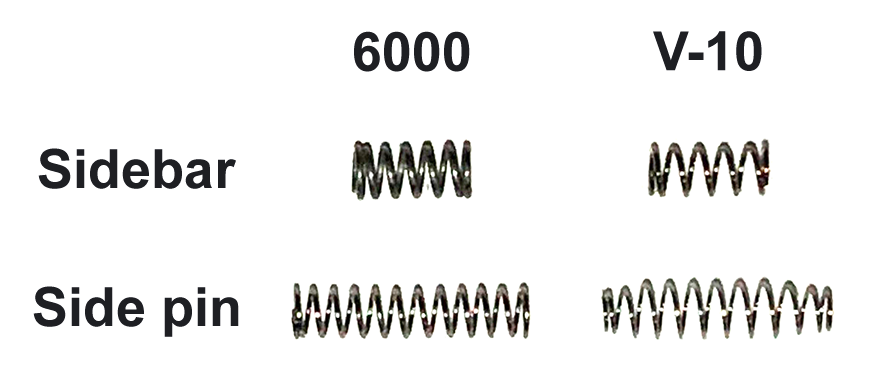
The option for multiple keyways was removed and V-10 cylinders would use a single, unified one. This new keyway had a dramatically increased complexity compared to the 6000 keyways, and also featured a patented undercut to give more concrete protection from unauthorized key duplication. This patent was held by Bo Widen.
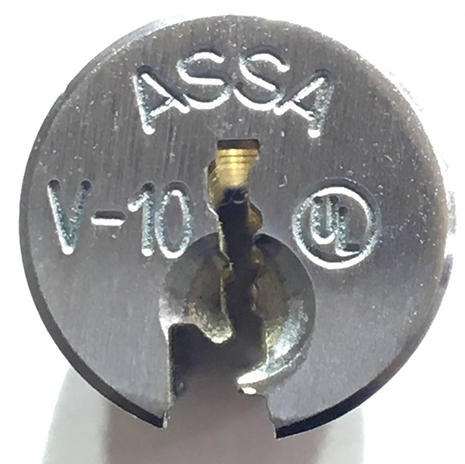
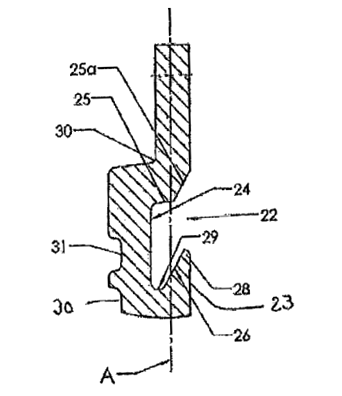
Small revision to the V-10
Not long into the V-10's lifespan, the design was revised again.
The side pins received another update, this time phasing out the turned false gates in favor of all milled ones. The bottommost false gate returned. The true gate received a small update to its geometry, it now is milled in an arch shape rather than straight across. This arch shape mates perfectly with the arch of the sidebar fences.
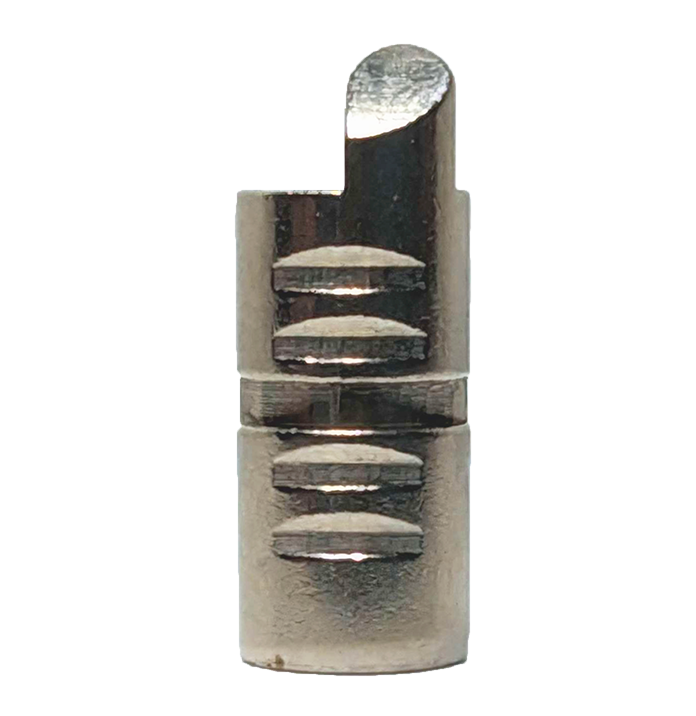
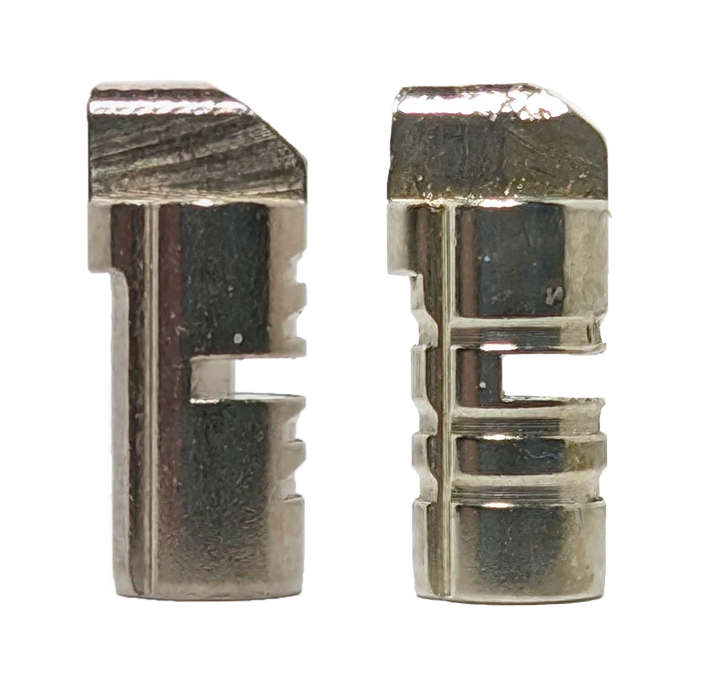
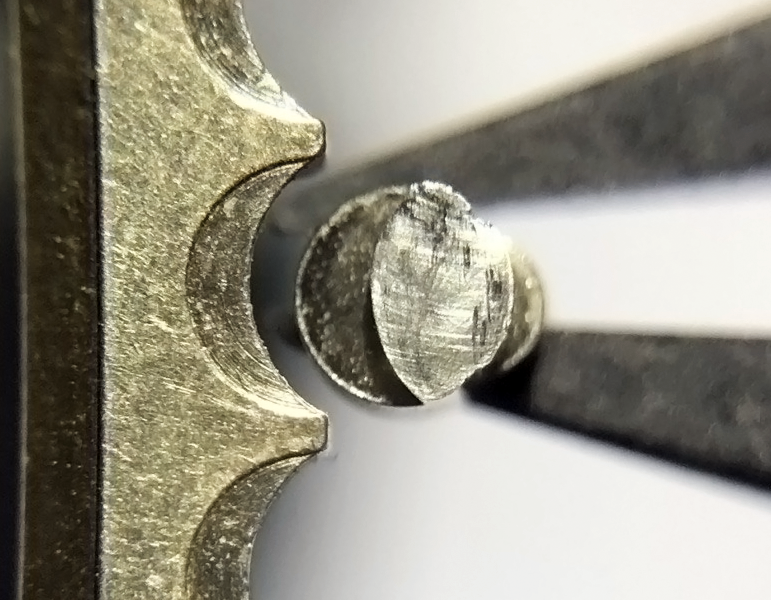
This side pin design is generally not considered significantly different from the previous V-10 side pin in terms of picking difficulty.
More drastically, gins were replaced with barrels. Barrels had a number of advantages over gins. They fixed the issue of inconsistent countermilling with their shallow, serration-like version. They were double-ended and so could not be installed incorrectly. Less material removed from the pin made them cheaper to manufacture. Barrels are generally considered easier to pick than gin bottles, but still very difficult, especially for their simplicity.
As well, key pins received a small update. With gin bottle style driver pins, the head of the pin had a rounded doming effect while the top surface of the keypin was completely flat. With barrel style drivers, both ends of the pin are flat while the key pin has a raised area in the middle, met from the edges by slopes, like a flattened, truncated cone. In both designs, one of the two surfaces is domed in order to slightly widen the shear line and thereby make the lock tolerate a certain degree of wear to the pins, key, and plug.
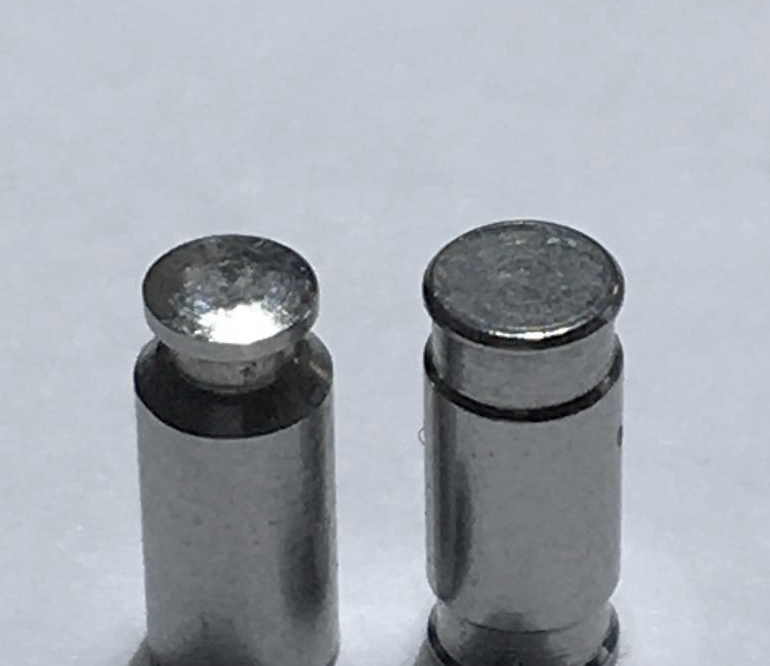
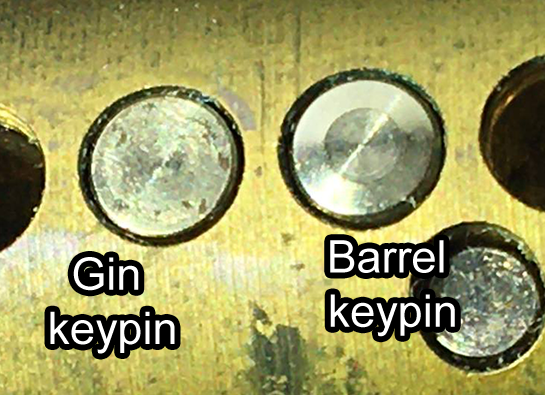
The Twin Exclusive
In many locations that ASSA did business, such as Sweden and Germany, the 6000 was discontinued with the release of the V-10. However, the 6000 saw more widespread adoption in North America and support for it was sustained. This lead to the introduction of the Exclusive as a revision to the 6000.
The Exclusive added tighter keyways with the patented undercut to the existing 6000 design. Originally, Exclusives planned to be made with keyways modified from, and backwards compatible to, the 51, 52, and 62. Keyways 50 and 61 were omitted due to key strength concerns. However, only a modified 51 keyway ever saw production, being named the 851.

It also updated the driver pins to barrels, with Exclusives that use gins never being produced. The 6000s being produced were transitioned to also use barrels. At some point the 6000 was renamed to the 6000 Classic.
Small revision to the 6000 Classic and Exclusive
At some point in the lifespan of the 6000 Classic and Exclusive, the design of the side pins received a very small update. The top surface of the pin around the spring hole was chamfered and rounded off. Previously the top surface was mostly flat, which could sometimes cause the springs to get stuck while trying to install the side pins.
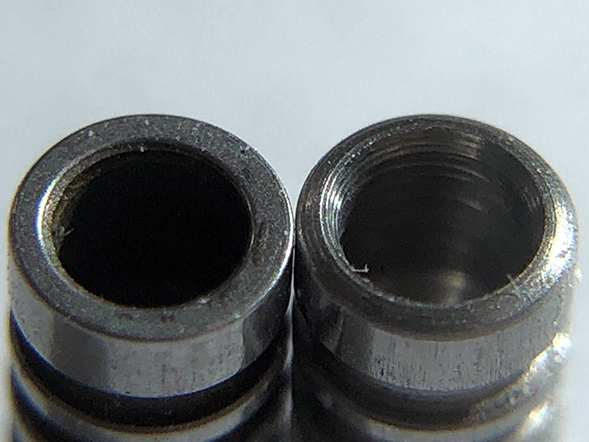
This change of course does not affect picking whatsoever.
Release of the Twin Pro
The Twin Pro is very similar to the V-10 with only small changes. The keyway warding was simplified slightly and the blade thickened in order to strengthen it. The undercut was made more extreme, and the extra piece of drill protection in front of the side pins was removed. The lower security version without a sidebar mechanism was not produced for the Pro. The fore/aft contact points of the side pins were not implemented either.
What was new was the contact points of the side pins against the key being changed from a round footed shape to a V-shaped protrusion. The foot of the pin is no longer divided in half, it now has a larger squared off surface making contact with the housing. This was a further improvement over the V-10 in terms of reliable contact with the key that minimized wear. The gates are identical to the V-10's revised side pin gates.
Release of the Twin Maximum
The Maximum is extremely similar to the Pro. It uses a keyway of largely the same shape but with extra small warding pieces along the blade.
The Maximum's side pins are identical to the Pro's save for the return of the fore/aft sidebar contact points from the V-10, executed by laterally offsetting the V-shaped contact point to one side or the other. Again, this feature is rarely used if ever.
The Maximum however was the first Twin series lock to full integrate with Cliq, ASSA's electromechanical system that uses normal pin tumblers coupled with a fully electronic sidebar. Cliq keys have a communication contact pad on the side of the key opposite to the side pins, and the Maximum plugs were updated to include a cutout to allow Cliq keys to fit and operate non-Cliq locks.

Release of the Maximum+
The Maximum+ was renamed to drop the "Twin" name. It saw the return of the cheaper version with no sidebar in the form of the Maximum+ Restricted which was missing from the Maximum, Pro, and Exclusive.
The one and only physical change between the Twin Maximum and the Maximum+ is the keyway. It uses a new, tighter keyway that is backwards compatible to the Maximum, but now has a new undercut geometry that is protected by a new patent. Rather than simply milling the warding at an angle, there is now an additional step where the undercut is further sculpted using a special speed-controlled broach or punch. This renewed the patent protection on the keys, which was set to expire for the V-10, Exclusive, Pro, and Maximum. This new patent is held by... Bo Widen.
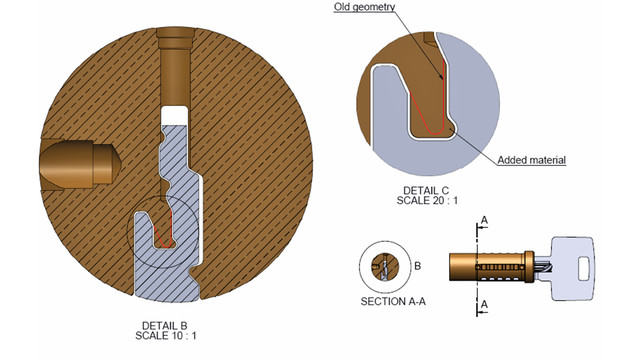

Another small change is the warding for the undercut is now partially set back into the keyway, similar to Medeco keyways. This is to protect the fragile undercut "tongue" piece from being eroded by wear and potentially bending from repeated key insertions.
Small additions to the Maximum+ lineup
SFIC retrofit support was added to the Maximum+ lineage in the form of a special keyway. Existing Maxmimum+ keys do not enter SFICs, and SFICs do not contain a sidebar.
Additionally, locks with raised plug faces that use the shoulder of the key for turning force rather than the blade were made available. This is a very common method to prevent key breakage under heavy use. This option was also made available for the Twin 6000 Classic.
Conclusion
As may be apparent already, changes to the design became subtler and subtler over time as issues were ironed out. Periodically, more radical changes are implemented in order to extend patent protection. The next patent expiration of note will occur in 2030, by which point it may be the case that ASSA will stop producing entirely mechanical locks altogether in favor of electromechanical or fully electronic.
Designwise, the current Maximum+ line is a superior compromise between pick resistance, manufacturability, cost, and reliability. Although the original 6000 with gin bottles is regarded within the lockpicking community as the most difficult to pick, for actual use I would recommend the newest Maximum+.


